How to organize the Keyword Optimization process into a concrete step-by-step action plan.
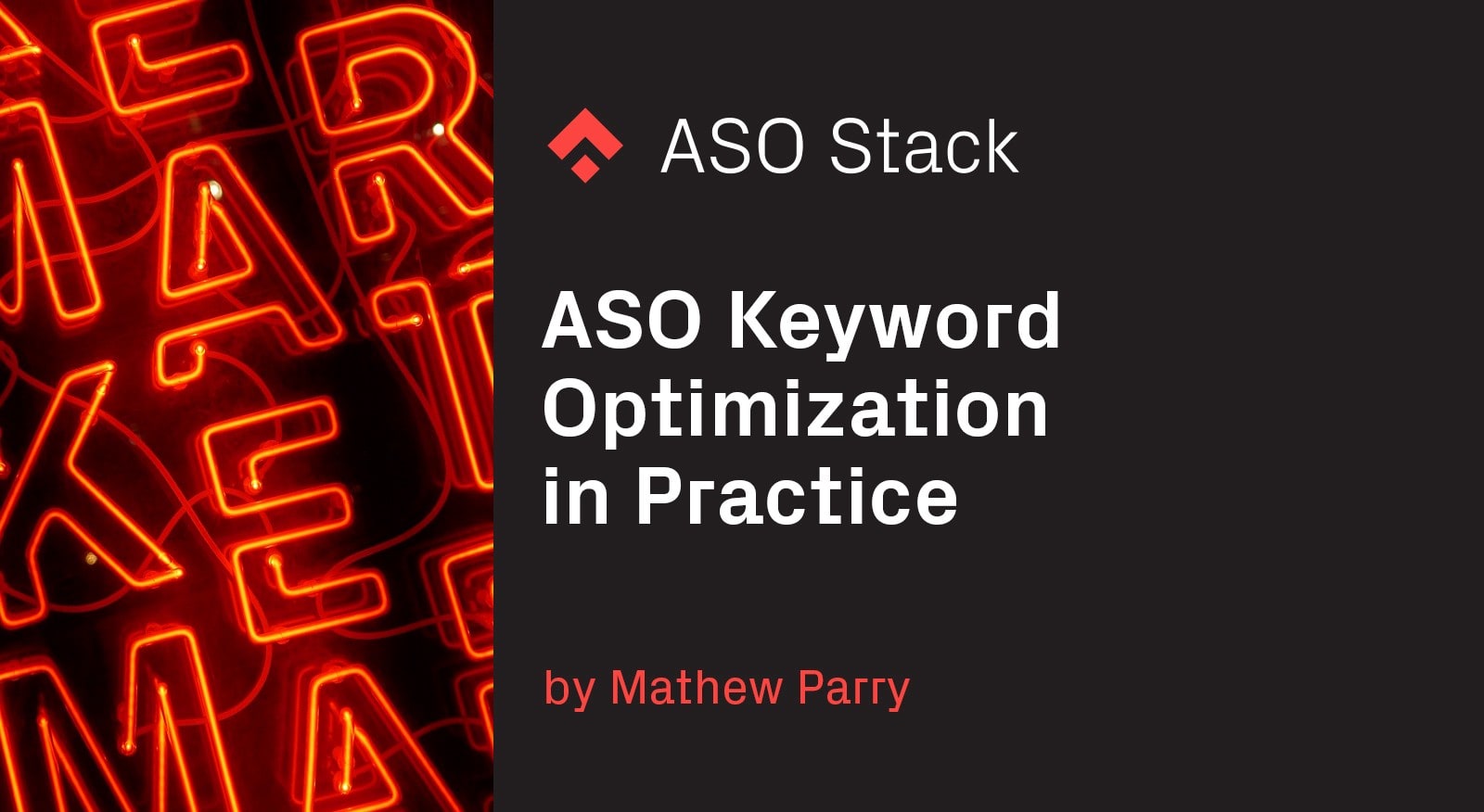
Now that you’ve had the time to develop your keyword backlog through researching and setting the relevancy in ASO Keyword Optimization in Practice: Part 1, we will be moving on to how you can review and build up your keyword recommendations within the backlog itself.
Step 2.C: Review individual keywords
You’ve now set your relevancy for each search term — these are broken down into single short heads on the following tab and are assigned an individual score in our spreadsheet. The length of each keyword can serve as a strategic factor, especially if you see relevant keywords with the same score: Shorter keywords will consume less space in the metadata character allowance (e.g. 30 characters are allowed for the App Store title) and should be prioritized over their longer counterparts for a similar keyword score.
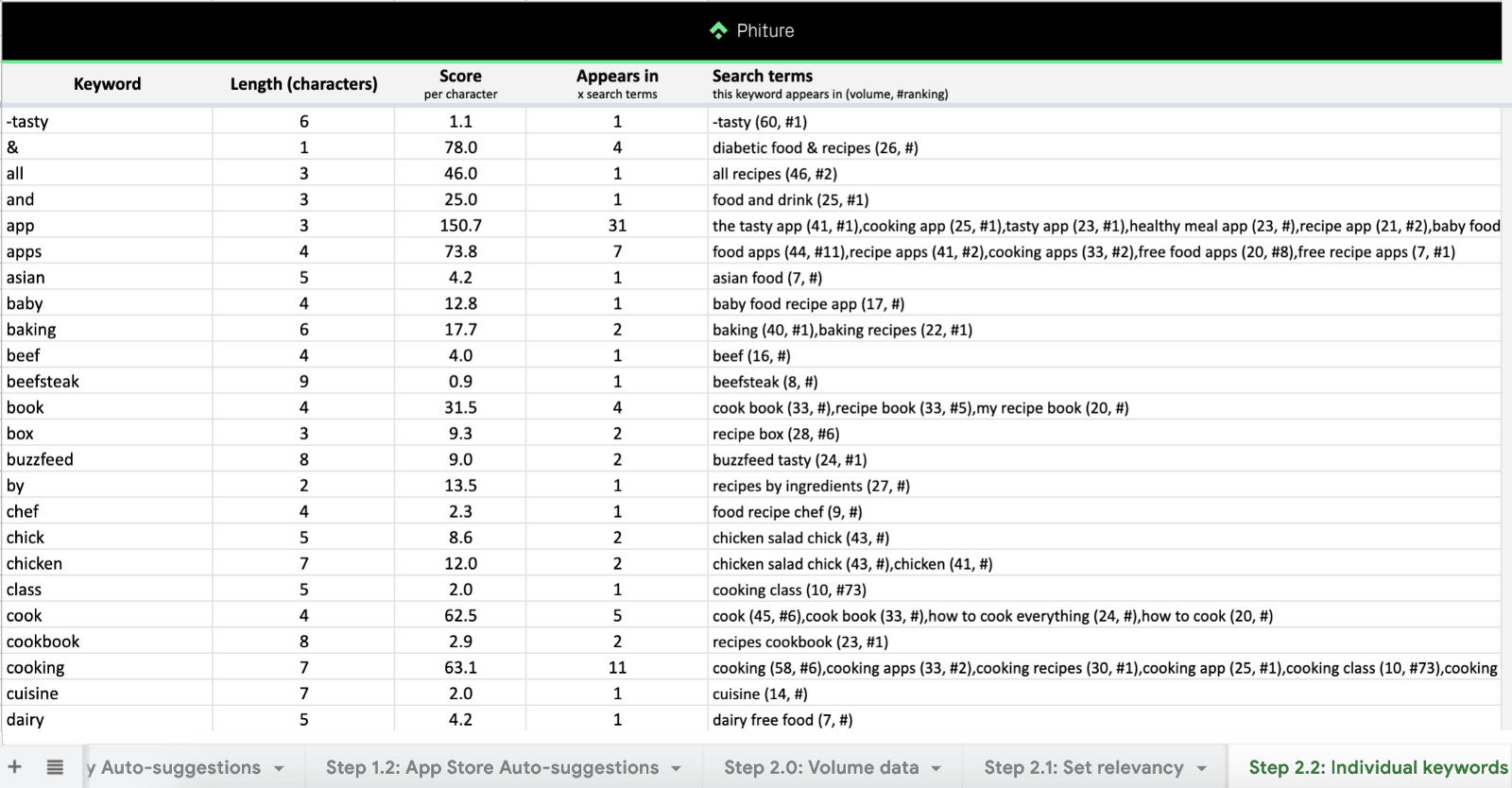
Our tool divides each short head’s score by the number of its characters, resulting in the score per character. The purpose of this calculation is to reflect a more realistic value of each short head keyword based not only on its benefits (high search volume, relevancy, etc.) but also its costs (how many characters it would take in your app’s metadata). This is an important factor to consider as metadata assets come with character limitations, and you would want to make sure every character is optimized.
Step 3.A: Selecting keywords & building metadata for the app store
After the scoring stage is completed and reviewed, it’s time to start targeting specific keywords for each of the app’s metadata assets. This is divided into 2 separate processes for the App store and the Play store, as they entail slightly different criteria & requirements.
We start with the Apple App Store first in the spreadsheet — in the tab “Step 3.0: App Store Metadata”. The screenshot below is an example of how this sheet looks when you get started.
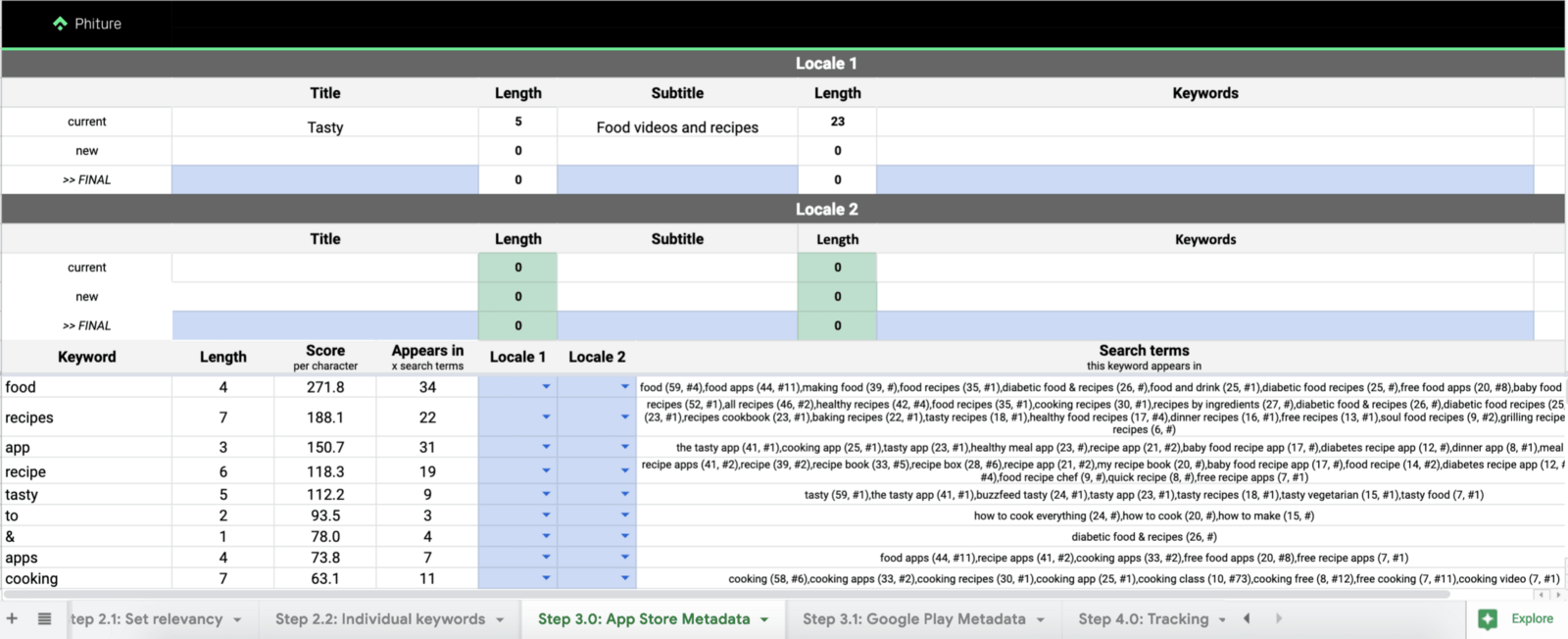
Now we’ll look at how you can navigate this sheet with ease:
- Localization
Before you start, it’s important to know that Apple sometimes indexes keywords from multiple locales to one storefront. For example, an app will rank for keywords inserted in the Spanish (MX) metadata in the US store. This means if your app is not localized for Mexico, you can use the Spanish (MX) locale to store more keywords for the US store. This hack applies to more languages, and more details can be found here.

Because most storefronts allow apps to rank for keywords in 2 locales simultaneously, we have made this tool a default template to leave space for 2 locales in iOS keyword optimization. We recommend using your focus keywords in “Locale 1”, and keeping “Locale 2” for extra keywords.
- How to target keywords per asset in the sheet
Below the localized metadata boxes, there is a list of short-head keywords ranked in order of their score, based on the prioritization levels of the tracked keywords in the previous steps. In the same section containing these keywords, there are “drop-down boxes” that allow you to select the preferred asset to target per keyword.
Keep in mind that it’s important to look at the number of search terms that a keyword appears in, and to match the different keywords together to be able to target these search terms.
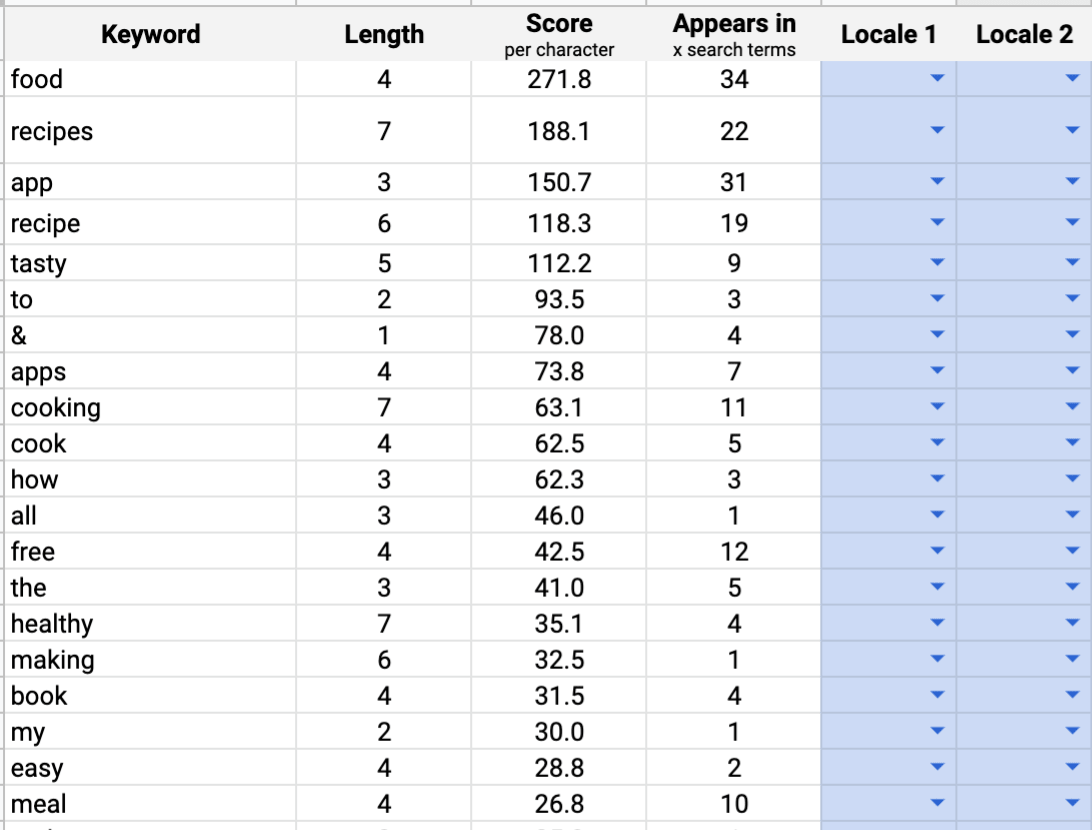
Simply clicking on the locale drop-down box will provide you with a list of options to choose the field of metadata you what to target — title, subtitle, or the keywords field.
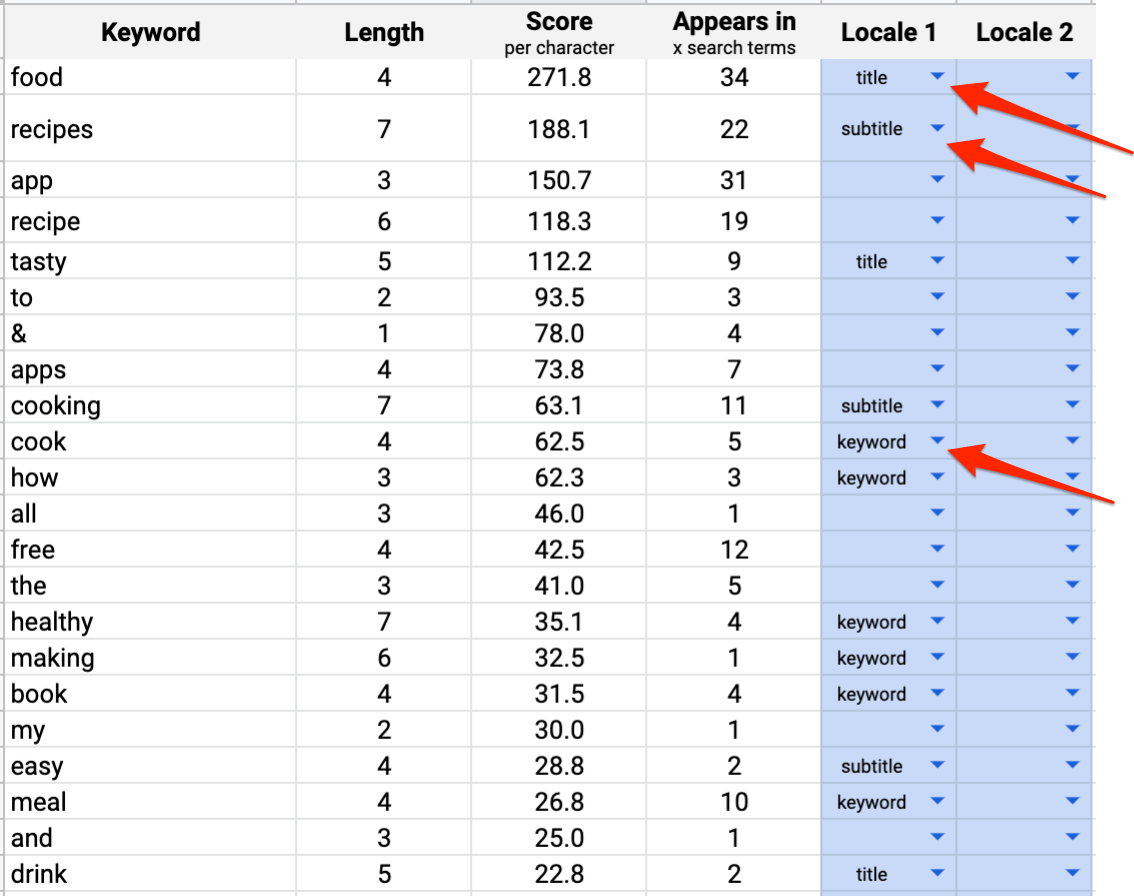
This step should be complete until the app’s metadata assets have reached or got close to the character limits.
- Metadata before & after keyword optimization
In the metadata box for each locale, apart from the specific type of asset, there is also additional information for the length of each asset before and after keywords are targeted:

- The “current” row shows what the existing metadata looks like and how many characters they take — except for the keywords field as access to App Store Connect is required to get this data. Thanks to an earlier step (Scrapped data), publicly available metadata is already loaded in the sheet — such as title and subtitle — and they are automatically generated here.
- The “new” row shows an overview of all targeted keywords with an estimated length without editing.
- The “final” row shows what the actual metadata asset would look like with editorial adjustments such as capitalizing first letters.
*note: While it’s important to maximize the number of keywords in each metadata asset, the structure, and tone of your copy is also crucial for your conversion rates! Keyword stuffing in the title and subtitle should, therefore, be avoided because it would make an app’s metadata look clunky, could decrease users’ motivation to download and might even be rejected upon submission.
Step 3.B: Selecting keywords & building metadata for the Play Store
Much like the App Store metadata, for the Play Store, all metadata assets are also listed along with their lengths. They are compared before and after the keyword targeting process is done.
One main difference, however, is that on Google Play, repeated keywords aren’t ignored by the algorithm. Instead, repeating keywords in the metadata (up to an acceptable degree) will increase the density and add weight to search terms, increasing the chance that an app ranks higher for them.
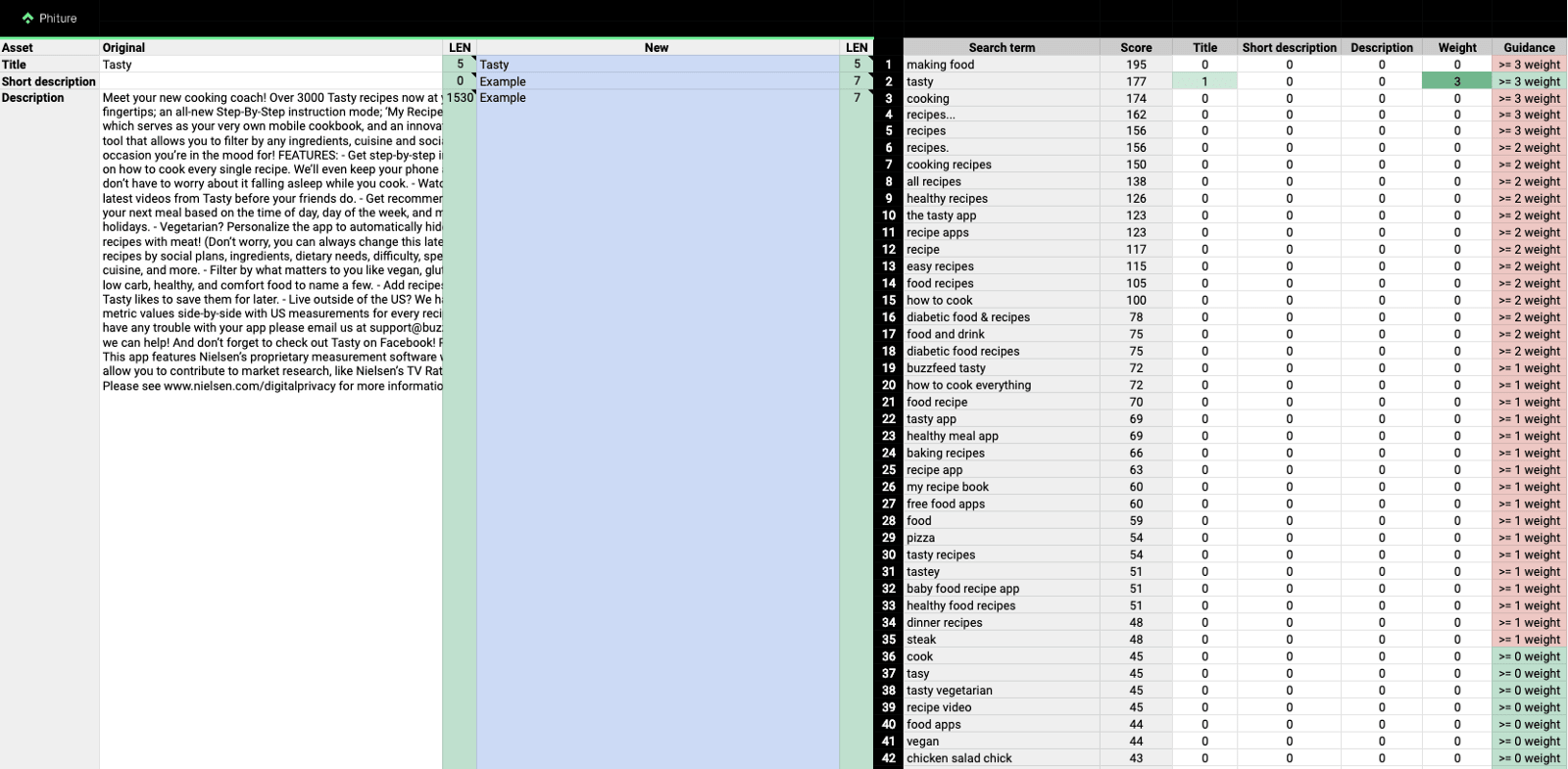
As seen in the example above, a list of the most important (top 50) search terms is created in the sheet. They are also ranked in order of priority or keyword score and displayed with the metadata assets they are inserted to, as well as the number of times they occur. These elements are taken into the calculation of a Weight score per search term on the right and will highlight green when you have a suitable density in your metadata.
In the example above, some keywords have been added to the metadata assets to make use of the total character count.
While the list of highest-score search terms shows and counts exact matches, Google Play metadata doesn’t differentiate exact matches from broad matches — as opposed to the App Store. Which means sometimes the tool will show a slightly different number of keyword occurrences in the metadata than the actual number (for plurals for instance). Additionally, to improve search rankings of Tasty for search term “food videos”, you may target “food” in the title, and “videos” in the subtitle, but the sheet will show 0 occurrences of “food videos”. It would be good to keep an eye on this aspect during the keyword optimization process for the Play Store.
Step 4: Review tracked keywords
After metadata has been created with Step 3, they can be updated in the App and Play stores.
In order to efficiently measure the impact of the new metadata, it’s important to start tracking the keywords that matter by adding them to a keyword tool and tracking any changes that happen to your keyword ranking afterward. It also helps greatly in preparing for the next iteration of keyword optimization — by starting with only prioritized keywords.
This process can be made more efficient with our tool, in the tab “Step 4.0: Tracking”, which shows you the list of prioritized keywords that Step 2.1 produced earlier, along with their relevancy labels, search volume, number of search results, and final keyword score.
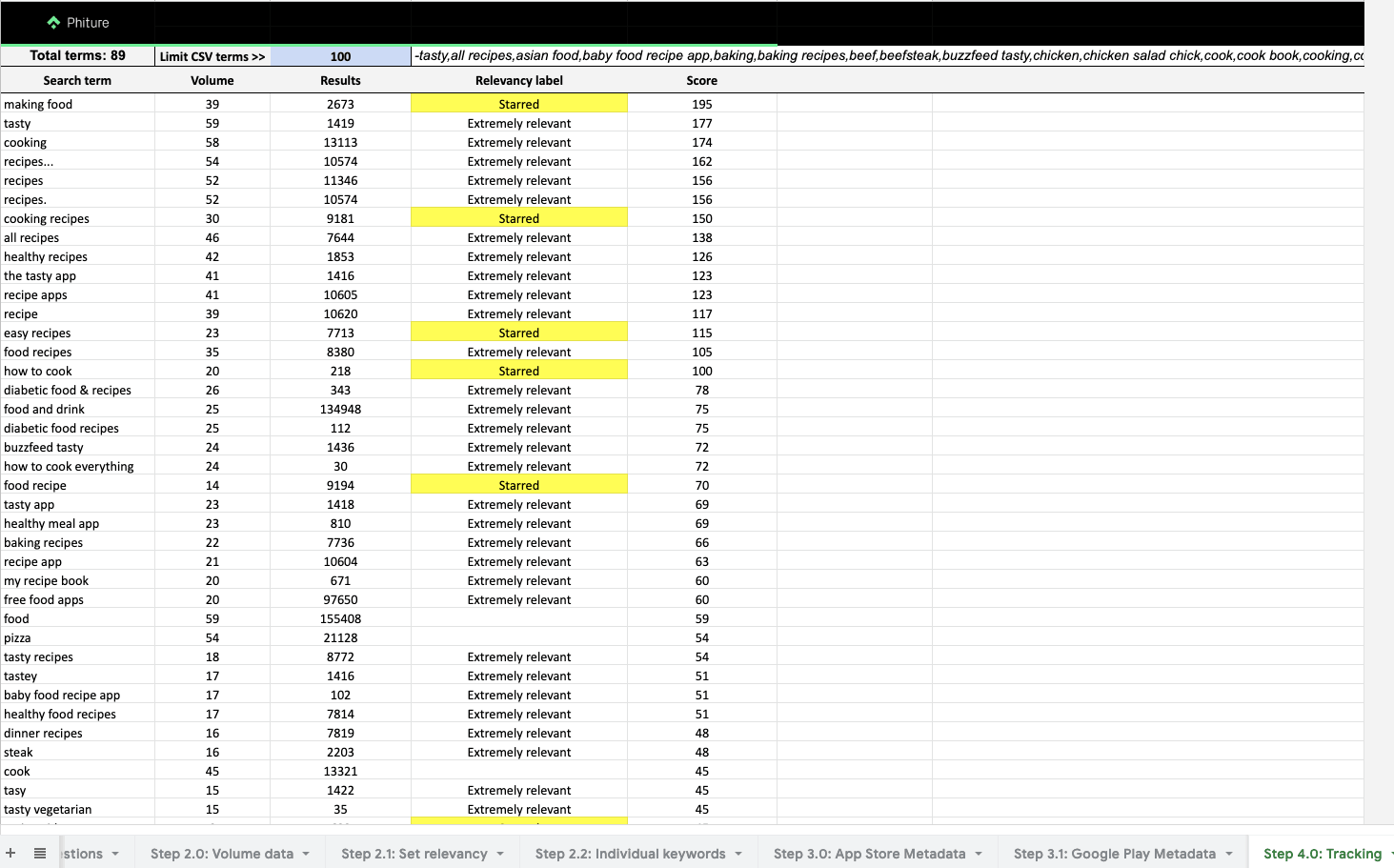
In the same row as the Total terms box you’ll see your search terms have been generated into a comma spaced list — just copy and paste them into any ASO keyword tool and they will start being tracked ready for further analysis going forward.

The Keyword Optimization Cycle should always be considered in spiral form — as it never fully stops, so you’ll be looking to repeat the cycle on a regular basis to continue improving your keyword ranking and visibility. Ensuring each subsequent iteration is more informed than the previous. It’s important to always keep an eye out for new data points, changes in the search algorithm in either store and even seasonal events happening outside the stores (such as the World Cup which made football-related keywords grow in search volume briefly).
With Phiture’s KWO tool, we hope to make make your keyword optimization more efficient, saving you time to gather more data and work on additional improvements for your app store presence. Happy optimizing folks!
If you liked this post, leave a 👏 and share it on your social media. If you have suggestions or questions about the Keyword Optimization Cycle, please do let us know in the comments below 👇. Also, check out our ASO Monthly which covers ASO highlights of the previous month.
Discover our ASO eBook and join our Slack channel to learn even more about ASO.












